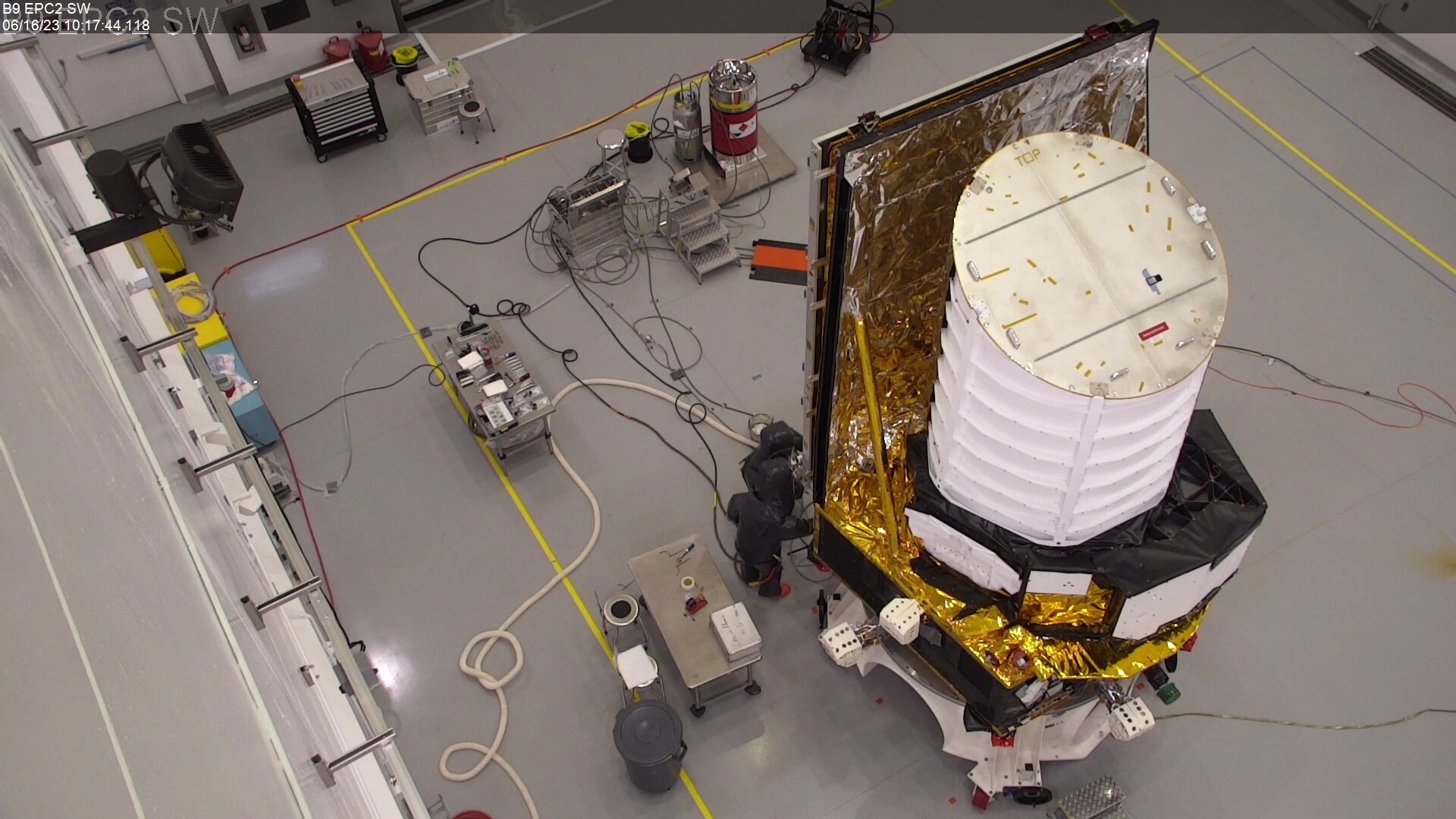Euclid fuelled for launch
ESA’s Euclid gets fuelled inside an Astrotech facility near Cape Canaveral in Florida (USA) ahead of its launch on a SpaceX Falcon 9.
The Euclid spacecraft is supplied with two types of propellant: hydrazine and gaseous nitrogen. Ten hydrazine thrusters will provide chemical propulsion to complete the journey to Sun-Earth Lagrange point L2, perform monthly manoeuvres to stay in orbit, and dispose of the spacecraft at the end of the mission’s life. 140 kg of hydrazine are stored in one central tank.
Fuelling the spacecraft is a delicate operation because the hydrazine fuel is highly toxic. The task had to be carried out by experts who each wear a self-contained atmospheric protective ensemble, or ‘scape’ suit.
To deliver images of the highest quality, the Euclid’s spacecraft must ensure a very precise and stable pointing. For accomplishing this, Euclid will use six cold gas micro-propulsion thrusters fed by nitrogen stored in four tanks at high pressure. The stored 70 kg of nitrogen will ensure a mission lifetime of at least six years.
ESA's Euclid mission is designed to explore the composition and evolution of the dark Universe. The space telescope will create the largest, most accurate 3D map of the Universe across space and time by observing billions of galaxies out to 10 billion light-years, across more than a third of the sky. Euclid will explore how the Universe has expanded and how large-scale structure is distributed across space and time, revealing more about the role of gravity and the nature of dark energy and dark matter.






